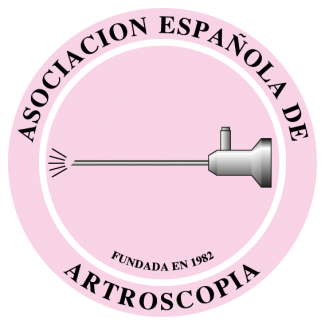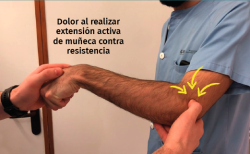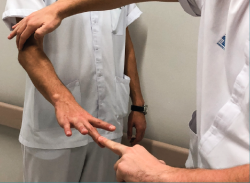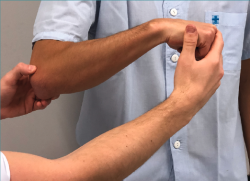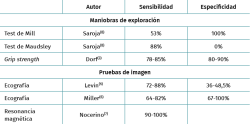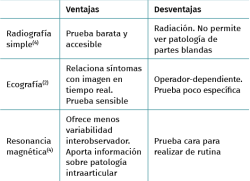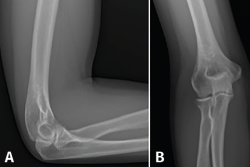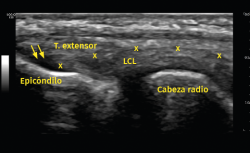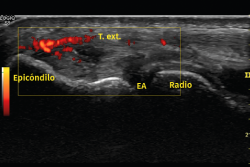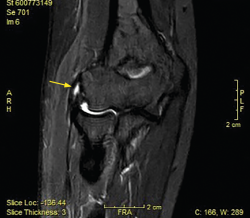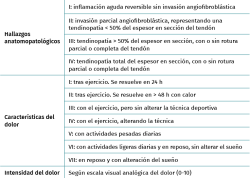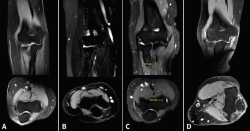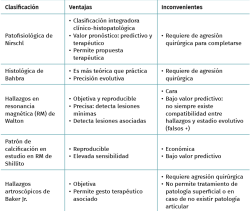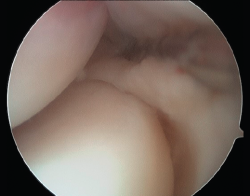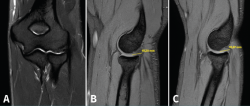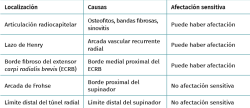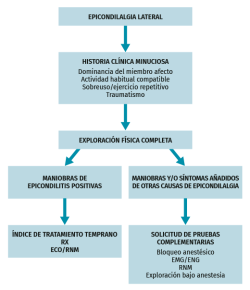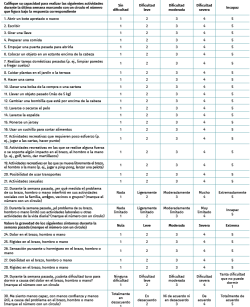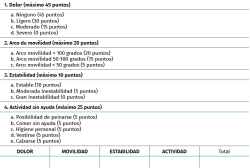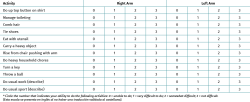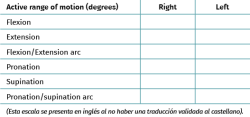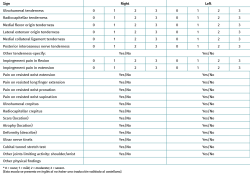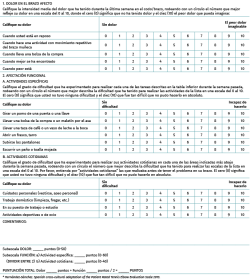Resumen
Objetivo: la epicondilitis es un término de uso común que se refiere a un trastorno caracterizado por una tendinopatía de la musculatura que se inserta sobre el epicóndilo lateral del húmero distal. Por tanto, el término más apropiado para referirse a este problema debe ser tendinopatía lateral del codo. El objetivo es analizar algunos aspectos prácticos claves en el diagnóstico y la evaluación de esta patología, así como examinar las clasificaciones disponibles y las herramientas de evaluación de esta patología al alcance de los investigadores y clínicos, estableciendo recomendaciones específicas.
Material y método: se realizó una revisión narrativa de la literatura por parte del Grupo de Estudio de Lesiones Musculares y Tendinosas (GELMUT) de la Asociación Española de Artroscopia (AEA).
Conclusiones: en un paciente con dolor lateral de codo, en un primer episodio, con síntomas de corta evolución, la historia clínica y el examen físico son suficientes para el diagnóstico e iniciar tratamiento específico.
Si el paciente no mejora con el tratamiento pautado o presenta síntomas atípicos, se debe complementar el estudio con radiografía anteroposterior y lateral, y una ecografía. La resonancia magnética (RM) se indica cuando el paciente continúa con síntomas y la ecografía no muestra ningún hallazgo. La patología compresiva del nervio radial debe tenerse en consideración en tendinopatías resistentes al tratamiento conservador.
Se recomienda el empleo de la clasificación patofisiológica de Nirschl, dada su aplicabilidad clínico-quirúrgica en cirugías abiertas, y la de Baker, que permite la estratificación según los hallazgos intraoperatorios artroscópicos.
Se sugiere someter al paciente a 2 cuestionarios: uno específico de la patología del codo, el DASH (Disabilities of the Arm, Shoulder and Hand), y otro específico de la tendinopatía lateral del codo, el PRTEE (Patient Rated Tennis Elbow Evaluation), cuyo uso supone cierta limitación, a pesar de estar validado en varios idiomas, pues la versión en español no está publicada de forma oficial.
Abstract
Objective: epicondylitis is a commonly used term that refers to a disorder characterized by a tendinopathy of the musculature that is inserted over the lateral epicondyle of the distal humerus. Therefore, the most appropriate term to refer to this problem should be lateral tendinopathy of the elbow. The objective is to analyze some key practical aspects in the diagnosis and evaluation of this pathology, as well as analyze the classifications and the evaluation tools of this pathology available to researchers and clinicians, establishing specific recommendations.
Material and method: a narrative review of the literature was conducted by the Grupo de Estudio de Lesiones Musculares y Tendinosas (GELMUT) of the Asociación Española de Artroscopia (AEA).
Conclusions: in a patient with lateral elbow pain, in a first episode, with symptoms of short evolution, the medical history and physical examination are sufficient for the diagnosis and to initiate specific treatment. If the patient does not improve with the prescribed treatment or has atypical symptoms, the study should be complemented with anteroposterior and lateral radiography, and an ultrasound. Magnetic resonance imaging (MRI) is indicated when the patient continues with symptoms and the ultrasound does not show any findings. Compressive pathology of the radial nerve has to be considered in tendinopathies resistant to conservative treatment.
The use of Nirschl pathophysiologic classification is recommended given its clinical and surgical applicability in open surgeries. Baker's classification allows for stratification according to intra-operative arthroscopic findings.
We suggest presenting the patient 2 questionnaires: one specific for the pathology of the elbow, the DASH (Disabilities of the Arm, Shoulder and Hand), and another specific for lateral tendinopathy of the elbow, the PRTEE (Patient Rated Tennis Elbow Evaluation), that although it is validated to several languages, Spanish version is not official, so its use entails a limitation.
Artículo
Figuras y tablas
Referencias
Descargas
Licencia
Este contenido es de acceso abierto (Open-Access) y se ha distribuido bajo los términos de la licencia Creative Commons CC BY-NC-ND (Reconocimiento-NoComercial-SinObraDerivada 4.0 Internacional) que permite usar, distribuir y reproducir en cualquier medio siempre que se citen a los autores y no se utilice para fines comerciales ni para hacer obras derivadas.
